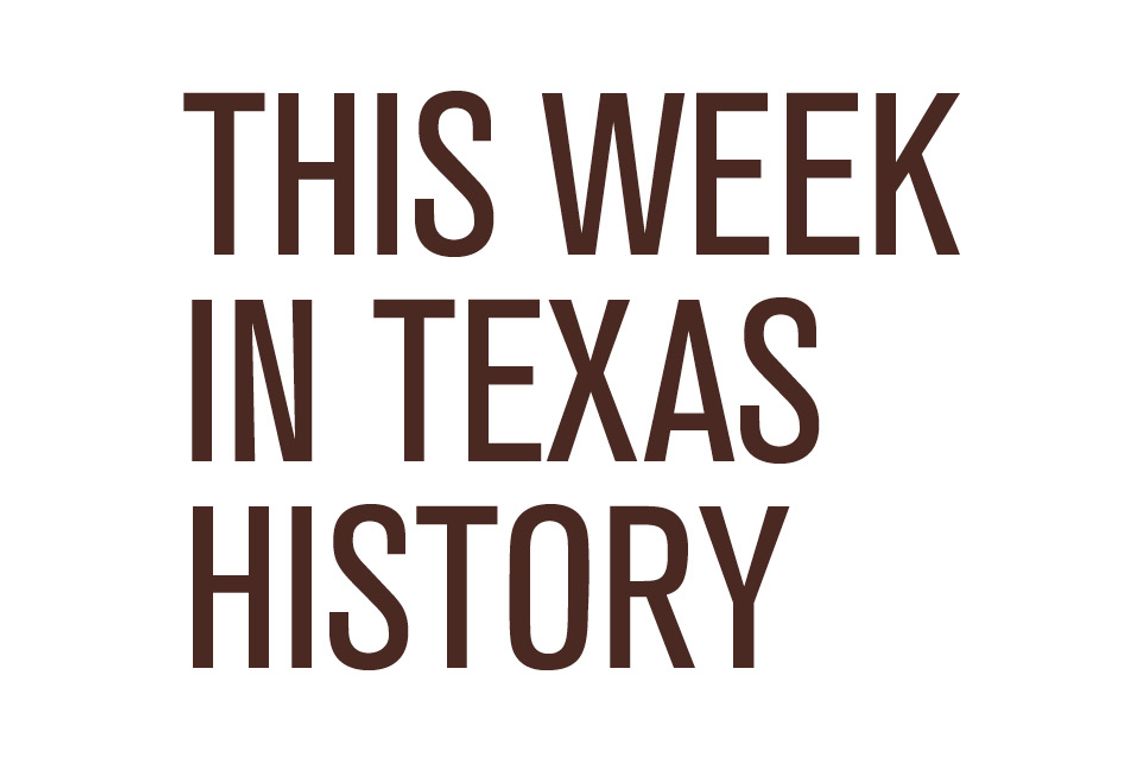With the publication of this column, “This Week in Texas History” is officially 35 years old making it the longest running feature of its kind ever. And for that I am indebted to the many newspapers that have carried it all these years and to you, my loyal readers.
As the sun slowly set in the piney woods on July 5, 1832, a stranger on a mysterious mission crossed the Sabine River into the Mexican province of Texas.
In recent years, Benjamin Lundy had faced the fact that agitation alone would never liberate the slaves. The Quaker editor understood that most white Americans, who in principle supported the abolition cause, cringed at the thought of blacks, freed from southern bondage, living next door.
Lundy believed the only way to overcome the prejudice so prevalent in the North was to prove that former slaves could become productive and responsible members of society. To this end, he tried without success to create a community of freedmen in the Caribbean country of Haiti.
It was no coincidence that Texas was his second choice as the site for the grand experiment. In the early 1820s, Lundy owned a harness shop in Herculaneum, Missouri at the same time a neighbor named Moses Austin was planning to populate Mexico’s sparsely settled northern province. After the death of the elder Austin, he closely followed the progress of his son Stephen as he followed in his father’s footsteps.
Lundy announced in October 1831 that Texas was the perfect place for his humanitarian venture, an ideal location which would “present an asylum for hundreds of thousands of our oppressed colored people.” Although the Law of April 6, 1830 strictly prohibited further emigration from the United States, he was convinced the Mexican government, which had gone on record against slavery, would make an exception in this case.
Fearing a violent reaction from the native southerners among the Anglo-American settlers, Lundy wore a clever disguise and invented a false identity for his first trip to Texas in the summer of 1832. Not long after reaching Nacogdoches, he met Juan Antonio Padilla, an influential resident who encouraged the stranger to waste no time in applying for a land grant.
Lundy quickly filed the necessary papers for a tract with enough space for 400 homesteads. Naively assuming approval was in the bag, he hurried back to Baltimore to find financial backing and black colonists.
After waiting ten months for a decision on his application, Lundy figured the long delay demanded his personal attention. At San Felipe de Austin, he encountered the hostility that had concerned him on his initial visit.
The outspoken advocate of emancipation likely hit a nerve with an offhand comment. Stephen F. Austin’s growing flock included a vocal minority from the Deep South that did not take kindly to even the mildest criticism of their “peculiar institution.” Before anyone lost his head and throttled the agitator, he wisely slipped out of town.
Running out of money, Lundy was stranded for more than two months in San Antonio before earning passage to Monclova, capital of the combined state governments of Texas and Coahuila. Gradually working his way up the bureaucratic ladder, he at last sat down with the governor in early November.
The official cut short the conference without giving the abolitionist any grounds for optimism. But three days later, the governor summoned him for another private talk and gave assurances that his land grant would be issued as soon as the national congress did away with the anti-American ban.
The Law of April 6, 1830 was indeed repealed three weeks later but would stay in effect for six more months. Bewildered by the twists and turns of the foreign political system, the confused colonizer returned to the States to revive public interest in his project.
At home, however, Lundy learned that he had fallen out of favor with anti-slavery activists. Friends and associates, who formerly endorsed his idea of giving free blacks a fresh start in Texas, attacked the plan as a cop-out and told him to forget it.
But with his reputation on the line, Lundy ignored the sound advice and let his ego get the better of him. The result was a third trip to Texas in August 1834.
Blinded by his desperate desire to keep his doomed scheme alive, Lundy was totally oblivious to the imminent revolt against Santa Anna. Caught completely off guard by the fast-rising tide of revolutionary events, he bitterly blamed the heroic freedom fighters for his own failure.
Following the Battle of San Jacinto, Lundy launched a new career as a self-appointed authority on the Lone Star Revolution. In a widely read pamphlet entitled “War in Texas,” he claimed the independence insurrection was a cynical cover for a giant land grab by evil slaveholders.
Benjamin Lundy’s unsubstantiated allegations gave the abolitionist lobby in congress the ammunition to shoot down statehood. Former president John Quincy Adams based his entire argument against annexation on the anti-Texas tirade of the frustrated empressario.











